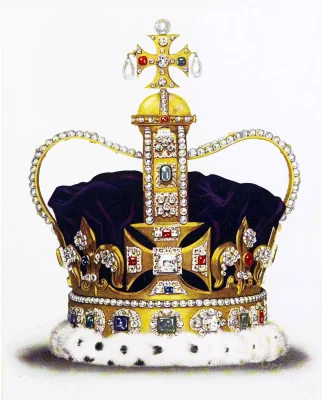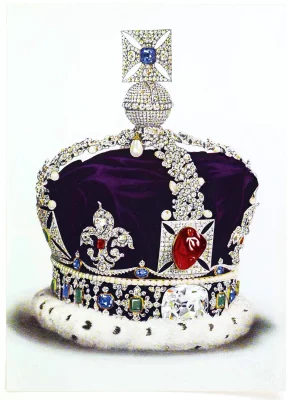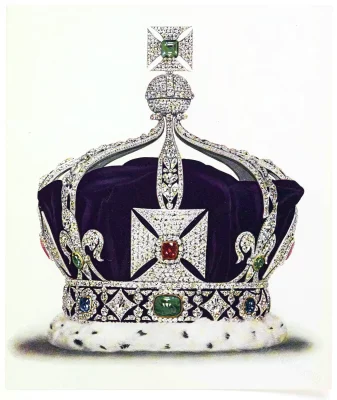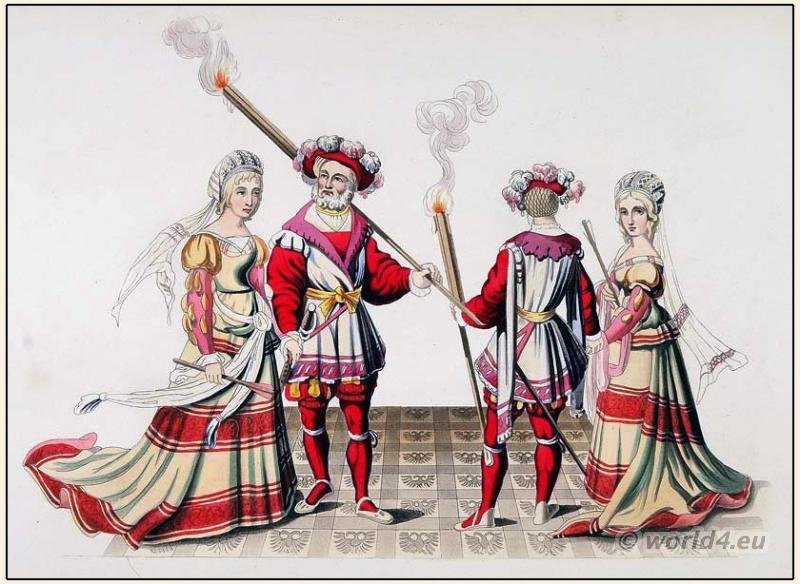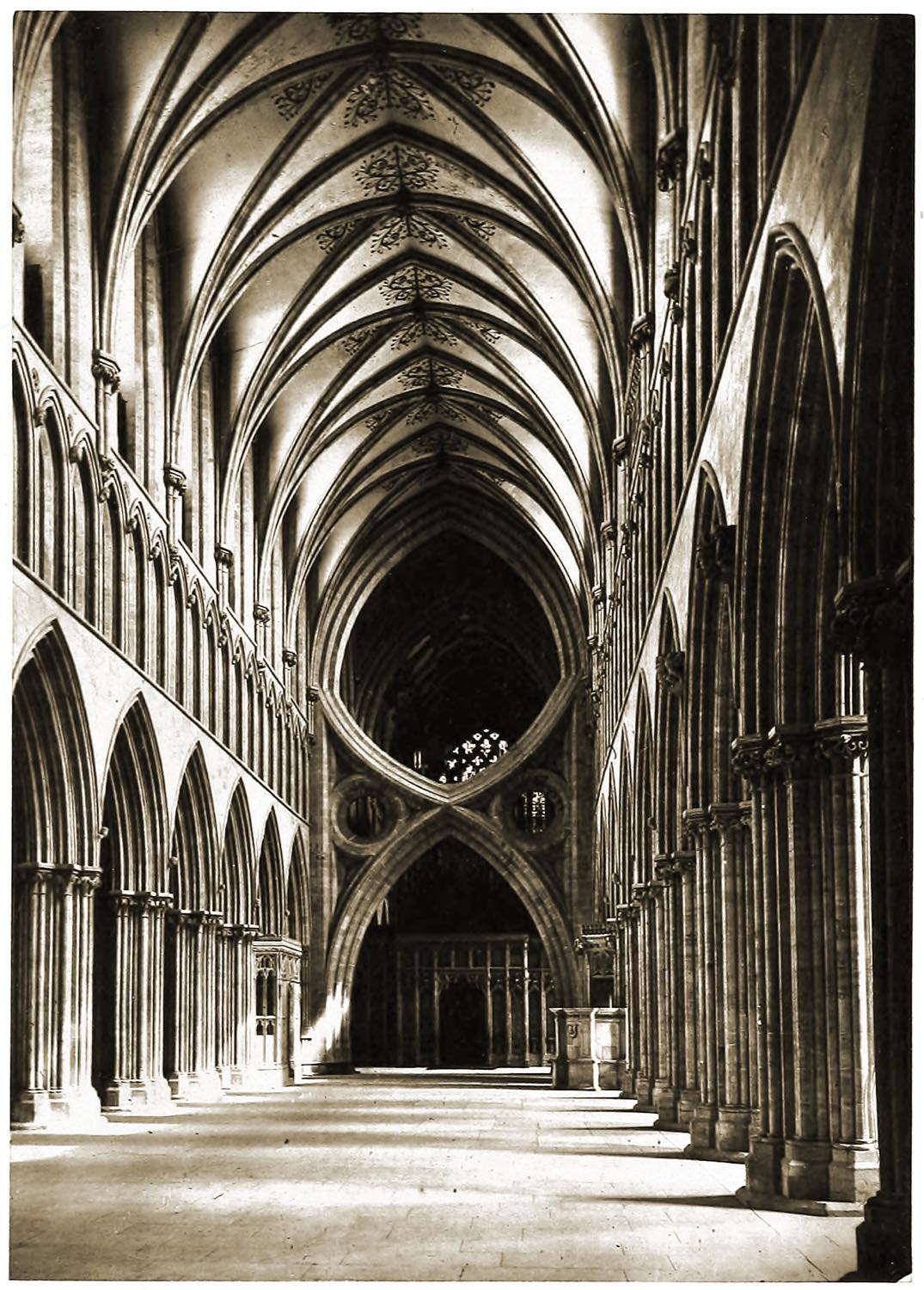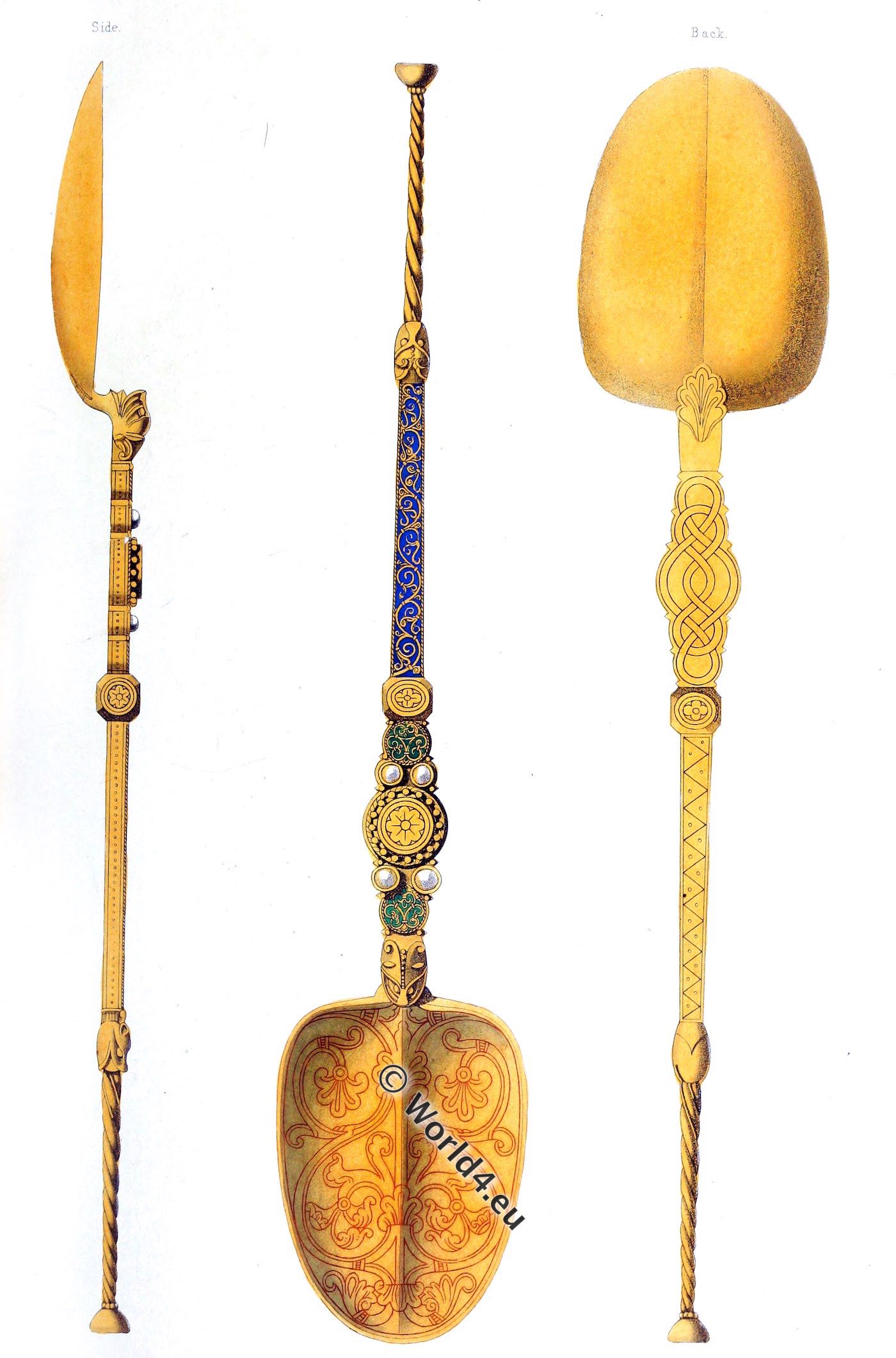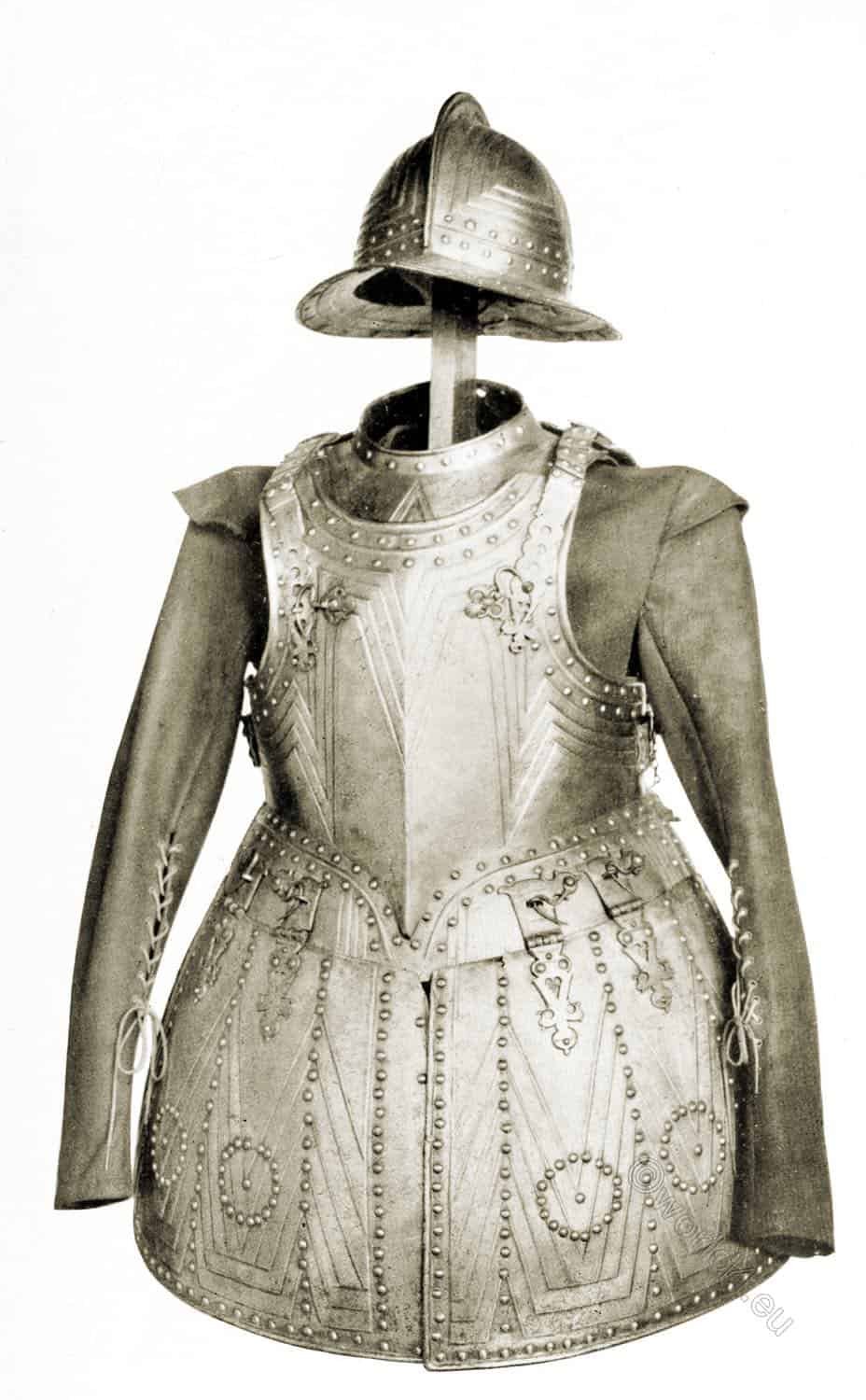The English royal crowns.
THE KING’S CROWNS.
The King has three crowns:
(1) King Edward the Confessor’s Crown, also known as St. Edward’s Crown.
(2) The Imperial State Crown.
(3) The Imperial Crown of India.
St. Edward’s Crown.
The crown known as St. Edward’s Crown was made for the coronation of Charles II. in 1662, by Sir Robert Vyner. It was ordered to be made as nearly as possible after the pattern of the ancient crown destroyed by the Commonwealth, and the designs shown in the works of Sir Edward Walker and Francis Sandford, demonstrate that inessential form it is the same no was then; indeed, the existing crown is in all probability mainly composed of the same materials as that made by Sir Robert Vyner. The crown consists of a rim or circlet of gold, adorned with rosettes of precious stones, surrounded by diamonds.
The centre gems of these rosettes are rubies, emeralds and sapphires. From the rim rise four crosses-patee, and four fleurs-de-lys alternately, adorned with diamonds and other gems. From the tops of the crosses rise two complete arches of gold, crossing each other, and curving deeply downwards at the point of intersection. These arches are considered to be the mark of independent sovereignty. They are edged with rows of silver pearls, and have gems and clusters of gems upon them.
From the intersection of the arches springs a mound of gold, encircled by a fillet from which rises a single arch, both of which are ornamented with pearls and gems. On the top of the arch is a cross-patée of gold, set with coloured gems and diamonds. At the top of the cross is a large spheroidal pearl, and from each of the side arms, depending from a little gold bracket, is a beautifully formed pear-shaped pearl. The crown is shown in the Tower, and has inside it a crimson velvet cap, turned up with miniver, which is worn with it.
This is the crown of England, and is the one with which the king is crowned when he ascends the throne.
The Imperial State Crown
This beautiful piece of jewellery was originally made by Rundell and Bridge for Queen Victoria in 1838. Many of the gems in this crown are of very ancient origin, whilst others can count their age by centuries or even by decades. The weight of the crown is 39 oz. 5 dwt. It consists of a circlet of open work in silver, bearing in the front the second largest portion of the Star of Africa, and on the reverse side the great sapphire from the crown of Charles II. which was bequeathed to George III. by Cardinal York, with other Stuart treasure, among which were also several old diamonds which are still set in this crown.
At one end the Stuart sapphire is partly pierced, and though it is not a thick stone, it is of a fine colour. The remainder of the rim is filled in with rich jewel clusters, having alternately sapphires and emeralds in their centres, enclosed in ornamental borders thickly set with diamonds. These clusters are separated from each other by trefoil designs also thickly set with diamonds.
The rim is bordered above and below with bands of large pearls, and above the rim are shallow festoons of diamonds, caught up between the larger ornaments by points of emeralds encircled with diamonds, and a large pearl above each. On these festoons are set alternately eight crosses-patée and eight fleurs-de-lys of silver set with gems.
The crosses-patée are thickly set with brilliants and have each an emerald in the centre, except that which is in the front of the crown. This contains the most remarkable jewel belonging to the regalia, a large spinel ruby of irregular drop-like form, measuring about two inches in length, which belonged to the Black Prince.* Its irregular outline makes it possible to recognise the place that it has formerly occupied in the older royal crowns, and it seems always to have been given the place of honour.
In the centre of each of the very ornamental fleurs-de-lys is a ruby, and the rest of the ornamentation on them is composed of rose diamonds, large and small. From each of the crosses-patée, the upper corners of which have each a large pearl upon them, rises an arch of silver worked into a design of oak leaves and acorns. Probably this feature in the crown relates to the escape of Charles II. in the oak tree at Boscobel on September 8th, 1651.
These leaves and the cups of the acorns are all closely encrusted with a mass of large and small diamonds, rose, brilliant and table cut; the acorns themselves being formed of drop-shaped pearls of large size.
From the four points of intersection of the arches at the top of the crown depend large egg-shaped pearls, which according to the Tower traditions were once the earrings of Queen Elizabeth. From the centre of the arches, which slope slightly upwards, springs a mound with a cross-patée above it.
The mound is ornamented all over with close lines of brilliant diamonds, and the fillet which encircles it, and the arch which crosses over it, are both ornamented with one line of large rose-cut diamonds set closely together. The outer lines of the arms of the cross are marked by a row of small diamonds close together, and in the centre of each arm is a large diamond, the remaining spaces being filled with more small diamonds.
The cross-patée at the top has in the centre a large sapphire of magnificent colour set openly, which is said to have come out of the ring of Edward the Confessor, which was buried with him in his shrine at Westminster, and the possession of it is supposed to give to the owner the power of curing the cramp. If this be indeed the stone which belonged to St. Edward, it was probably recut in its present form of a “rose” for Charles II., even if not since his time.
Not counting the Black Prince’s ruby, or the Stuart and Edward the Confessor sapphires, this crown contains—
Four rubies,
Eleven emeralds,
Sixteen sapphires,
Two hundred and seventy-seven pearls,
Two thousand seven hundred and eighty-three diamonds.
The large Black Prince’s ruby has been valued at £11O,OOO, but it is indeed priceless historically.
When this crown is required by the King for the opening of Parliament or like ceremonies, it is provided with a little box, lined with white velvet, and having a sliding draw at the bottom with a boss on which the crown fits closely, so that it is safe during its journey from the Tower.
The velvet cap turned up with miniver, known as the cap of maintenance, is kept with it.
This crown is the most valuable, and we may safely add the most beautiful, in the world, worthy of a sovereign on whose Dominions the sun never sets.
The Imperial Crown of India
This crown has a somewhat curious history though entirely modern.When it was decided in accordance with His present Majesty’s express desire that he should travel to India, there to be crowned Emperor of India, in the city of the Great Moguls, a question arose regarding the crown to be used for the ceremony. Apparently, according to the laws of England, the King is not allowed to take his crown out of England, possibly an echo of those ancient days when kings of England frequently temporarily disposed of their regal emblems to cover their present necessities. Moreover, there were considerable risks by sea and land which it was inadvisable that the historic crown of England should incur. It was therefore decided to make a new crown to be named the Imperial Crown of India.
It is a finely designed crown of the usual English pattern, with four crosses-patée and four fleurs-de-lys alternately set on the upper rim of the circlet. The circlet is of open work, with oval or circular bosses of coloured stones, emeralds and sapphires alternately, the centre stone being a remarkably fine cabochon emerald, separated by diamond-shaped bosses of diamonds, and double trefoils filling the spaces between. In the centre of the front cross-patee is a very fine Indian ruby. A fine emerald is set in the lower part of each fleur-de-lys and another very fine one in the centre of the cross-patée at the top. All the rest of the stones are diamonds.
The arches over English crowns, whatever their number may have been, have hitherto only pointed slightly upwards, been practically level at their tops, or depressed in the centre, as are those of St. Edward’s crown and the crown of the Prince of Wales.
In this new crown for the Emperor of India a new pattern for the arches has been adopted, and it is nearly the same as that used for the crowns of Queen Alexandra as well as that made for Queen Mary.
The arches are no longer complete, but are kept as half-arches, and the continuous reverse curve, known architecturally as an ogee, has been adopted. There are eight of these half-arches, one rising from the top of each cross-patée, and one from the top of each fleur-de-lys. They do not quite join at the top, but finish with small additional outward curves which flatten slightly at their points, thereby allowing room for some fair-sized brilliants to be set upon them.
These projections, which are close to each other, form a singularly effective collar for the support of the rich mound and cross at the top. Each half-arch is of open work, closely set with diamonds, and broadens out towards its centre, narrowing sharply towards its upper end. The outline is evenly kept all along, and the wreath within it is a graceful conventional design of leaves and flowers.
It was made by Messrs. Garrard for the coronation of King George V. as Emperor of India at Delhi in 1912.
Source: The crown jewels of England by G. J. Younghusband (1859-1944). Cassell and company, ltd., 1919.

